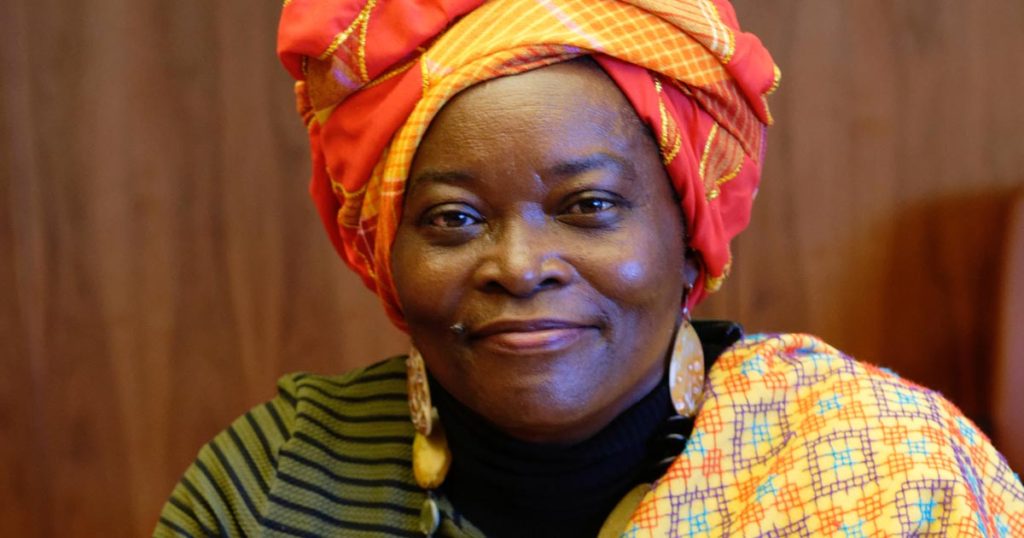In April 2022, I joined a group of descendants and allies of Maroon peoples at the United Nations headquarters in New York, where the 21st Session of its Permanent Forum on Indigenous Issues (UNPFII) was being held.
As a conch shell blows to bring the meeting to order, I look around the General Assembly chamber and catch the eye of the Trinidadian activist Akilah Jaramogi. It is largely through her persistent prodding that we are there at all.
This is a journey that started for her as a teenager — running from home and into the hills, answering the call of Rastafari, and eventually becoming the Paramount Chief of the Merikin Maroons of Trinidad. Their ancestors in the United States had escaped enslavement by fighting for the British in the war of 1812–14, for which they received grants of land in Trinidad — and their freedom.
There are other Maroon communities across the Caribbean — in Barbados, Belize, Dominica, Guadeloupe, Jamaica, Martinique, St Vincent, Suriname, Trinidad & Tobago — and further afield in Sierra Leone, and the Gullah/Geechee Nation (United States).
All, at one time or another, were involved in armed conflict, calculated uprisings, or serious bloodshed in opposition to enslavement. Some — as in Jamaica and Suriname — eventually received land rights through treaties signed with colonial authorities (some of which fell into grey areas after independence).
But Marronage is more than a rejection of or escape from oppression — it is about intentionally creating something to run to. And this goes far beyond concrete land rights.
In the Americas, the accepted understanding of Indigenous refers to the Taino, Kalinago, Warao, and peoples our history books erroneously teach us have been wiped out. But if erasure is the struggle of the colonised, Marronage is the weapon.
What this “Indigenous” identifier affords is recognition and respect for spiritual and farming practices; the right to education on the history and culture of these groups; the right to learn languages lost to colonial erasure; and reparations in the fullest sense — repairing 500 years of violent loss through real justice and equity.
It’s why in 2014 Akilah Jaramogi, Gaaman Gloria “Mama G” Simms (of the Maroon Indigenous Women’s Circle in Jamaica), and Fidelia Graand-Galon (of the N’djuka Nation and Maroon Women’s Network in Suriname) founded the Maroon Women Chamber of Cooperation.
What followed through 2018 was a flurry of meetings, visits, and conversations with elders — from Jamaica to the Gullah islands, Switzerland to Suriname. In 2019, the three women made their first visit to the UNPFII to begin pressing for Maroons in the Americas to be recognised as tribal/Indigenous peoples as legally defined by the UN.
Not everyone is comfortable with this.
As the UN meetings progress, we encounter both interest and suspicion among delegates. It is suggested that we might more rightfully belong at the Permanent Forum for People of African Descent, scheduled to have its first meeting in December 2022.
Our legal representative Andy Reid reminds us that we’re not there to ask for recognition, but simply to affirm who we are. In a meeting with Francisco Cali Tzay, the UN Special Rapporteur on the Rights of Indigenous Peoples, he asks, “How do you define yourself?” Self-identification is what matters most.
Can groups of people of African descent self-identify as Indigenous?
There is legal precedent for this in two rulings by the Inter-American Court of Human Rights, both involving Maroon communities in Suriname. In 2007, the court found that the Saramaka were a “tribal peoples” with a collective human right to the communal title, use, and protection of their traditionally owned territory and natural resources. It cited the 2005 case that acknowledged the cultural and spiritual rights of N’djuka Maroons in response to a massacre in Moiwana village.
Both rulings recognised that Maroon peoples have a spiritual relationship and ancestral ties to the lands they occupy — and that their roots in the Indigenous peoples of Africa were the source of their “distinct” social, cultural, and economic character. They established that Maroon peoples of the Americas have retained and evolved their African indigeneity into the peoples they are today.
Understanding what it means to be Maroon is to look long and deep into Caribbean history. It is to think of the first sighting of the first boat of conquistadors that reached the Caribbean. It is to imagine what words the Taino and Kalinago people had to create in their languages to help make sense of these newly arrived visitors, who quickly turned to foes.
It is to understand the complications of these relationships, and how they become further complicated by colourism, religious assimilation, centuries of violence, the rage of a people intercepted and interrupted, and by the grief of not knowing when the repair work will be at an end.
It is to imagine your ancestor trying to make sense of the bottom of a slave ship. It is to feel the midday sun and to understand the risk in plotting your escape — or worse, plotting to overthrow your captors.
It is to contemplate the complexity of survival.
At the UN, part of the uncomfortable work that we identify during the course of our side-meetings is confronting all the times we did not act as allies to each other. Mama G went on record this year as apologising for the role some Maroons played in the brutal crushing of multiple uprisings of enslaved peoples, including the famous Takyi’s Rebellion in 1760s Jamaica — which also catalysed the introduction of the Caribbean’s first laws against Obeah.
One of our contingent, the Garifuna Ambassador-at-Large Cynthia Ellis, addresses the Forum with an appeal for unity, for our islands to be borderless. Borderlessness in the face of oppression is what it means to be Garifuna. A united force of people coming together: Africans rescued from a wrecked slave ship by St Vincent’s Kalinago people, and over generations of miscegenation creating a new nation to wage war against British enslavement.
This is part of my own story. My Garifuna great-grandfather Papa Gimpie was born after Emancipation in Mesopotamia Valley in St Vincent. It is what draws me to this UN meeting, and this movement to reclaim lost ties, not just to one island but to the entire region.
It is his name that I call on the day that we visit the monument to the victims of the Atlantic Slave Trade on the grounds of the UN headquarters. There are tears on our cold faces as Kenrich Cairo of the Okanisi people of Suriname sings for those lost. With us, pouring libations to the ancestors, is Mireille Fanon Mendes-France — human rights lawyer and daughter of the late Martiniquan psychiatrist and philosopher Frantz Fanon.
We leave the UN to go on another journey, to another meeting. We share food and coffee and stories. We share solutions for healing and organising and recovery when harm is done by a community member.
History also begs that we look to the future. To the certain uncertainty of climate change; disappearing islands; the forcible separation from original homelands; the urgency of preserving distinct cultures; and what role — if any — Maroons and Indigenous peoples play in collectively challenging the social and environmental scars of imperialism.
This journey — like many stories involving Caribbean people — is long, complicated, and full of plot twists, with multiple points of starting, stopping, turning in on itself, and walking without fear.
And what does a United Maroon Indigenous Peoples mean for the Caribbean? That answer can’t be found at the United Nations.

